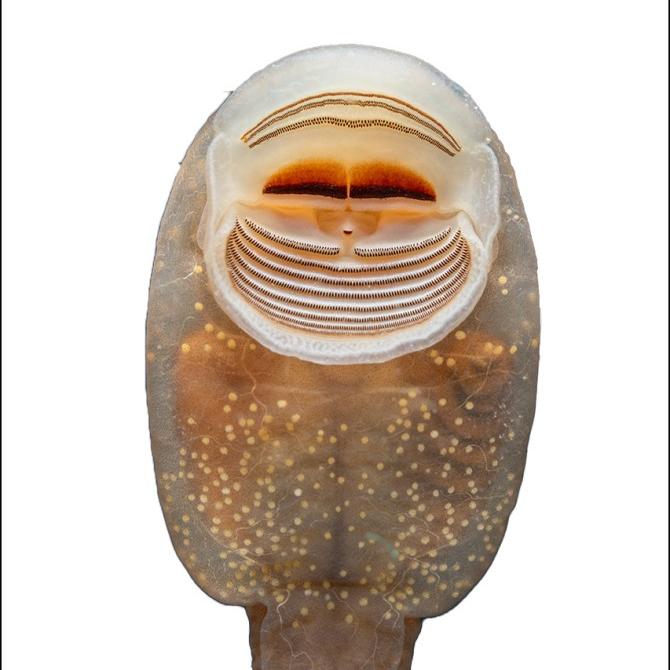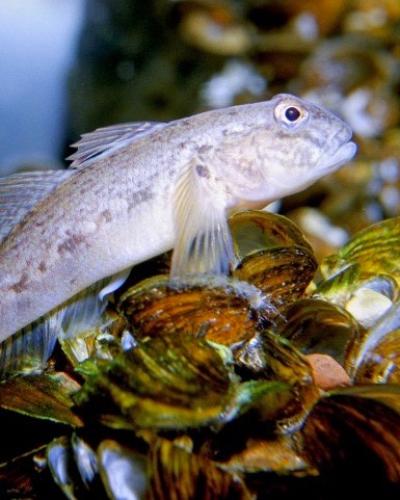Ecologists have demonstrated that the genetic material that species shed into their environments can reveal not only the presence of the species but also a broad range of information about the genetics of whole populations.
The advancement in environmental DNA (eDNA) opens new possibilities for protecting endangered and vulnerable species and managing destructive invasive species.
“This breakthrough is part of a continuous trajectory of learning more and more from eDNA, with this new study detecting the genetic variation within a species,” said study co-author David Lodge, the Francis J. DiSalvo Director of the Cornell Atkinson Center for Sustainability. “For the benefit of biodiversity conservation, we’re getting closer and closer to what forensic scientists do every day at crime scenes.”
In the new study, published Sept. 4 in the Proceedings of the National Academy of Sciences, the researchers demonstrated that their methodology was successful in field sampling of invasive round goby fish throughout the Great Lakes and the New York Finger Lakes.
The work builds on a pilot study in Cayuga Lake two years ago, when the researchers took tissue samples from round goby fish and eDNA samples of water the fish inhabited. They found that the two methods provided comparable genetic information.
The first author of both studies is Kara Andres, Ph.D. ’22, a former graduate student in Lodge’s lab and now a postdoctoral fellow at Washington University in St. Louis. She wrote the paper with co-authors Lodge, who is also a professor in the Department of Ecology and Evolutionary Biology in the College of Agriculture and Life Sciences, and Jose Andrés, a Cornell Atkinson faculty fellow and a senior research associate who co-directs the Cornell Environmental DNA and Genomics Core Facility.
In the cells of most animals, the nucleus contains two copies of the full genetic code, but each cell contains 100 to 1,000 copies of a smaller, stripped-down version of the genetic code in mitochondria. Most of the research on eDNA to date has focused on mitochondrial DNA, because it’s likely much more abundant in environmental samples, Kara Andres said. While mitochondrial DNA does well for distinguishing between species, it provides far less information than nuclear DNA about variation within species.
“The nuclear genome is much, much larger and it contains a lot more variation within species,” Kara Andres said. “When I started my Ph.D., we didn’t know of anyone who had even tried to look for variation within the nuclear genome in the context of eDNA sampling – we didn’t even know if it was possible.”
In their Great Lakes study, which involved collecting water and tissue samples from round goby fish in 13 locations from Lake Michigan to Oneida Lake, the researchers found that their eDNA sampling methodology can be used to detect nuclear genetic variations, making it possible to analyze genetic diversity and variation within species. This information is useful for natural resource managers because it can help them trace the source of a new invasive population as well as prevent further invasion or minimize harm by determining how invasive species are moving and how to stop them.
The breakthrough can also help scientists understand the demographics of imperiled species without requiring physical capture of animals that are already rare and vulnerable. Species experiencing population declines can suffer from a loss of genetic diversity, and eDNA may allow researchers to detect those declines earlier, Kara Andres said.
“It is a major step in unlocking the full potential of genomics techniques when applied to aquatic eDNA samples,” Jose Andrés said. “In the near future, I anticipate that this technique will allow us to study the status and health of elusive species. I believe this holds profound implications, particularly in marine environments.”
The research was supported by the U.S. Department of Defense, the National Oceanic and Atmospheric Administration, the National Science Foundation, and Cornell Atkinson.






